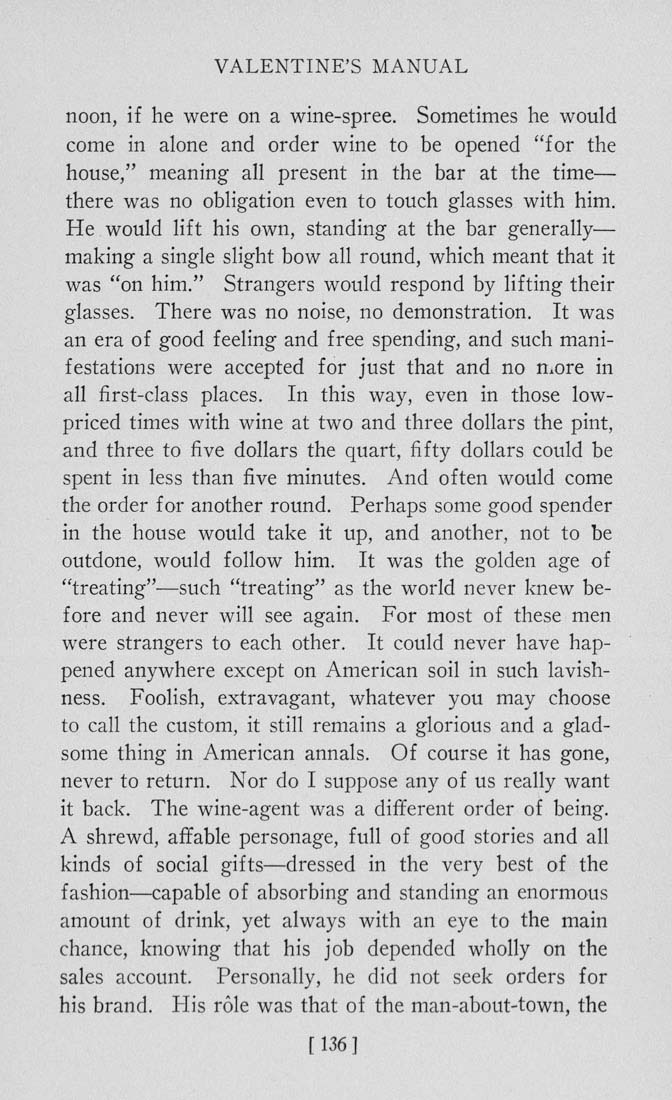VALENTINE'S MANUAL
noon, if he were on a wine-spree. Sometimes he would
come in alone and order wine to be opened "for the
house," meaning all present in the bar at the time—
there was no obligation even to touch glasses with him.
He would lift his own, standing at the bar generally—
making a single slight bow all round, which meant that it
was "on him." Strangers would respond by lifting their
glasses. There was no noise, no demonstration. It was
an era of good feeling and free spending, and such mani¬
festations were accepted for just that and no more in
all first-class places. In this way, even in those low-
priced times with wine at two and three dollars the pint,
and three to five dollars the quart, fifty dollars could be
spent in less than five minutes. And often would come
the order for another round. Perhaps some good spender
in the house would take it up, and another, not to be
outdone, would follow him. It was the golden age of
"treating"—such "treating" as the world never knew be¬
fore and never will see again. For most of these men
were strangers to each other. It could never have hap¬
pened anywhere except on American soil in such lavish-
ness. Foolish, extravagant, whatever you may choose
to call the custom, it still remains a glorious and a glad¬
some thing in American annals. Of course it has gone,
never to return. Nor do I suppose any of us really want
it back. The wine-agent was a different order of being.
A shrewd, affable personage, full of good stories and all
kinds of social gifts—dressed in the very best of the
fashion—capable of absorbing and standing an enormous
amount of drink, yet always with an eye to the main
chance, knowing that his job depended wholly on the
sales account. Personally, he did not seek orders for
his brand. Flis role was that of the man-about-town, the
[136]
|








